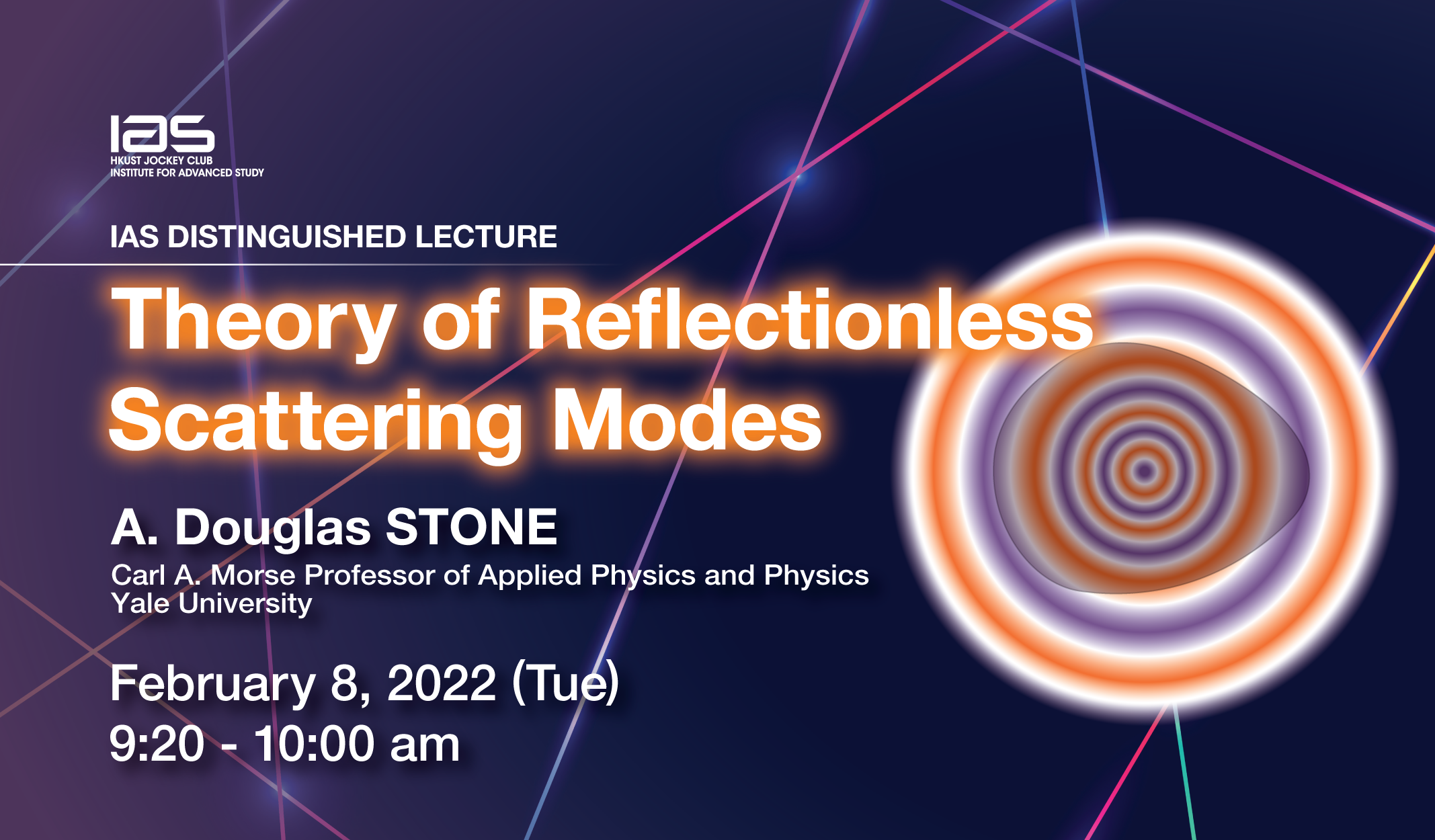Theory of Reflectionless Scattering Modes
Abstract
Coupling an input wave into or through a scattering structure without any reflection is a ubiquitous challenge in all of wave physics, both classical and quantum. While reflectionless perfect transmission through parity symmetric 1D resonant structures is a familiar textbook topic, the conditions for reflectionless excitation of general, non-symmetric structures in multi-channel, 2D and 3D geometries have not previously been elucidated in terms of a general theoretical and computational framework. In this lecture, the speaker will describe such a theory, which is based on general analytic properties of the scattering matrix and applies to the linear wave equations of optics and photonics, acoustics and quantum mechanics. It is shown that for finite resonant structures there exist a countably infinite number of complex frequencies at which such reflectionless harmonic solutions occur, which correspond to adapted input wavefronts, determined by eigenvectors of a generalized reflection matrix with eigenvalue equal to zero. He refers to such discrete solutions as R-zeros when they are complex, and as reflectionless scattering modes (RSMs), when they occur at real frequency. A special case of this is Coherent Perfect Absorption or time-reversed lasing, for which the energy is completely absorbed when the time-reverse of the analogous lasing mode is imposed on the system. However, in the new, more general theory, these solutions can be fully transmitted into any specified set of output channels of a lossless structure, as well being partially absorbed, or amplified in systems with absorption or gain. RSMs correspond to steady-state harmonic solutions and either require the system to have a symmetry (typically Parity-Time (PT)) or require the existence of one tunable structural parameter to achieve RSM. However, R-zeros can also be excited with transient (pulsed) inputs corresponding to a complex frequency excitation. Degeneracy of two RSMs corresponds to a new kind of exceptional point (EP), not previously studied, and leads to an increase in the bandwidth of the perfect absorption or transmission resonance. He will present experimental results showing excitation of RSMs and RSM-EPs in ring resonators and in microwave circuits. He will also show simulations and experimental results for microwave frequencies demonstrating that RSMs can be optimized to perform photonic processing functions such as demultiplexing of signals.
About the speaker
Prof. A. Douglas Stone received his PhD in Physics from Massachusetts Institute of Technology in 1983. After his post-doctoral studies, he joined the Yale University in 1986 and is currently the Carl A. Morse Professor of Applied Physics and Physics there.
Prof. Stone is a theoretical physicist with interests in solid-state and optical/laser physics. Specifically, he is interested in theoretical issues relating to physics and electronics on the nanoscale and in micro-lasers and other optical devices for integrated optics, which he analyzes using the tools of quantum and electromagnetic theory and non-linear dynamics (chaos theory).
Prof. Stone was the recipient of the Willis E. Lamb Award for Laser Science and Quantum Optics for his work on random and chaotic lasers (2015) and the Phi Beta Kappa Award in Science for his book "Einstein and the Quantum: The Quest of the Valiant Swabian" (2014). He was also elected a Fellow of Optical Society of America (2010), a Fellow of American Physical Society (1993) and the Alfred P. Sloan Fellow (1990).
For Attendees' Attention:
This lecture will be held online via Zoom. To join the lecture online: Please join the webinar at https://hkust.zoom.us/j/93267707356.



